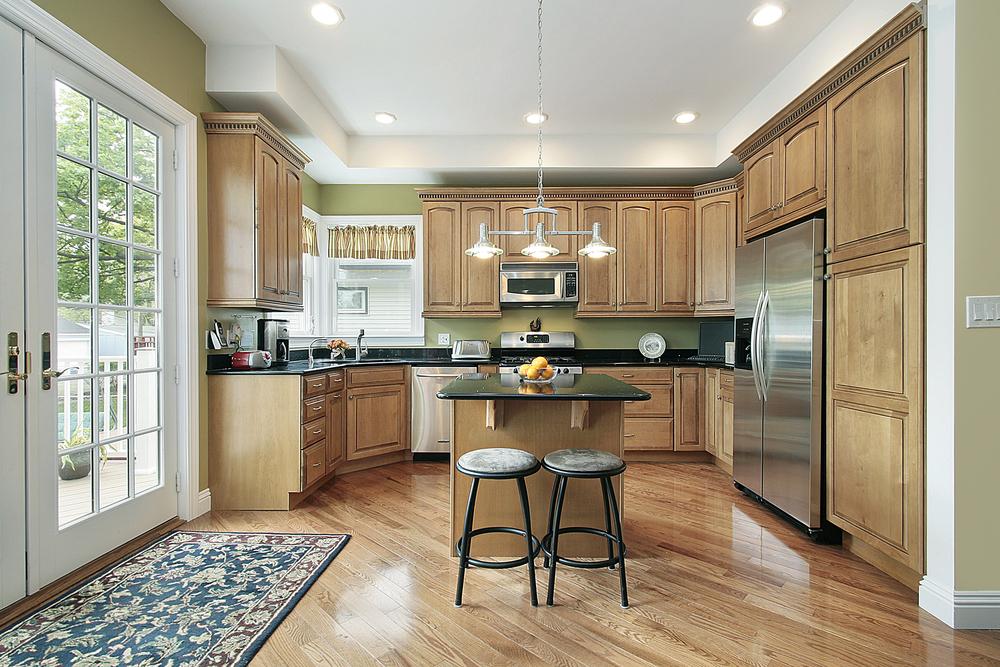
Are you thinking about upgrading your kitchen? Well, you’ve come to the right place because this blog will discuss one of the best additions you can make to your kitchen – a custom kitchen island. This can be a perfect option if you cannot fit a prefab kitchen island into an existing kitchen design or small space.
The kitchen is where most of us spend our time at home. It’s where we’re cooking and entertaining our guests. Why not make it the best it could be? A kitchen island is a perfect addition to a kitchen. It’s available in many different styles and sizes to find one that fits your kitchen perfectly. With a kitchen island, you’ll be able to take full advantage of all the features of your kitchen.
A kitchen design with an island can be the game-changer you’ve been looking for. Not only does it provide extra storage and prep space, but it can also add a stylish focal point that ties your entire kitchen together. Who doesn’t love a good gathering spot for friends and family to congregate around?
In this blog, we will dive into the nitty-gritty and explore why custom kitchen islands in Canada are the perfect addition to any home. We’ll break down a few tips on how to design the best kitchen islands, tips on how to maximize space, and even provide you with a rough breakdown of how much it costs. So, get ready to be inspired, learn something new, and discover why a custom kitchen island might be the missing piece in your kitchen puzzle.
How to Design the Perfect Kitchen Island for Your Home?

Designing the perfect kitchen island countertop can be a daunting task. In this blog, we’ll explore some of the best kitchen island ideas and share some expert tips and tricks to help you create the ideal kitchen island designs that meet your specific needs and elevate the style of your home.
Here are the 6 different types of kitchen islands and a quick tip on achieving the look.
Modern kitchen island
Sleek, clean lines and minimalist design characterize a modern kitchen island. To achieve this look, opt for a streamlined countertop material, such as quartz or marble, and choose a base with a minimalist design. Consider incorporating high-tech features like built-in appliances or a touchless faucet to enhance the modern feel.
Freestanding kitchen island
A freestanding kitchen island is a self-contained unit that can be installed in the center of the kitchen and not attached to any wall like a kitchen peninsula. It typically includes counter space, drawers, shelving for storage, an area to prepare meals, and sometimes a kitchen sink or stove. The overall design of a freestanding kitchen island can range from traditional to more modern styles, depending on personal preferences.
Portable kitchen island
Like a freestanding island, a portable kitchen island can be moved around to suit your needs. Choose an island with wheels or casters and a base that allows for easy movement if you want to achieve this island design in your kitchen.
Kitchen island with seating
A kitchen island with seating is perfect for casual dining or entertaining. Select an island with an overhand that allows for stools or chairs, and consider a countertop material that is durable and easy to clean, like granite or engineered stone. Ensure enough space for people to comfortably sit and enjoy a meal.
Kitchen island breakfast table
On the other hand, a kitchen island with a breakfast table is quite similar to a kitchen island with seating, but it offers a bigger and cozier spot for enjoying your morning meal. Choose an island with a larger overhand that allows for chairs or even a bench, and consider a warm, inviting countertop material like wood or butcher block.
Triangular kitchen island
A triangular kitchen island is perfect for large kitchens and provides extra storage and prep space. To achieve this in your kitchen, choose an island with a triangular shape that fits your space, and consider a countertop material that complements the rest of your kitchen. Add some cabinets or drawers for extra storage, and consider incorporating a sink or cooktop for added functionality.
Tips on How to Maximize Space by Customizing the Kitchen Island

Most homeowners choose to customize kitchen island size and dimension to maximize space. Here are a few tips for making the most of your space with a customized kitchen island.
- Consider customizing your island for the kitchen with features that can serve more than one purpose, such as a built-in sink or stovetop, extra storage, or a seating area.
- Use the sides of your kitchen island to create a large kitchen island and add storage or display areas. You can incorporate shelves, hooks, or cabinets to store cookbooks, utensils, or even pots and pans.
- If you have an oversized kitchen island, make use of under-counter space. Include cabinets or drawers under the countertop to maximize storage space in your kitchen. This can be a place where you can store large kitchenware like pots and pans or even small appliances like blenders or mixers.
- Choose a kitchen island that works for your space. Customizing the shape of our kitchen island can help maximize space in your kitchen. For example, portable islands for small kitchens work well in condo units and small apartments.
How Much Does a Kitchen Island Cost?
The cost of a kitchen island can vary significantly based on its size, construction, and characteristics. Compact kitchen island prices of inexpensive materials like MDF or laminate might range from $500 to $800. A larger island, however, might easily cost upwards of $10,000 or more if it has unique features and premium materials like granite or marble. Most kitchen islands cost between $3,000 and $5,000 on average. When considering custom kitchen island cost, it’s crucial to consider both the upfront cost and installation cost for the kitchen island.